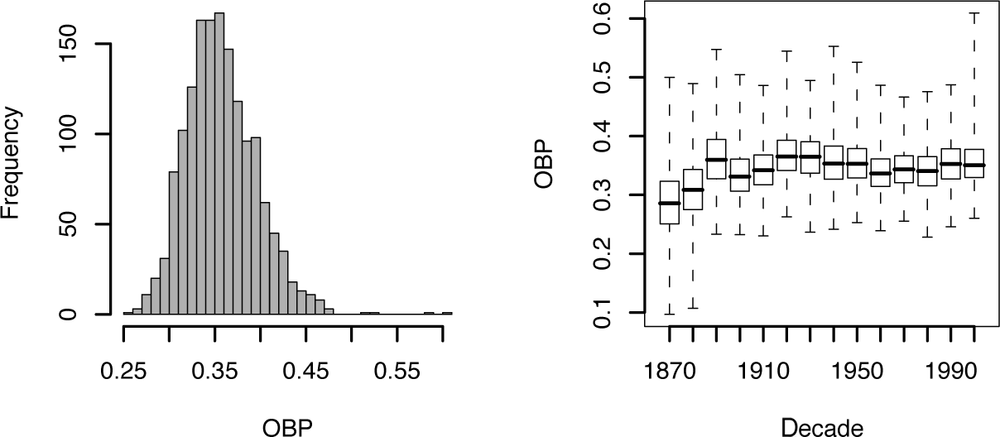Measure Batting with SLG
Use slugging average to measure batting power.
Slugging average (SLG) is a kind of weighted batting average. In normal batting average, all hits count the same, but in SLG, doubles count twice, triples count three times, and home runs count four times. A high SLG means that a hitter hits the ball often and hits it hard. SLG is an old statistic, but writers such as Bill James have made it much more popular recently.

Figure 5-2. On-base percentage histogram and box plot
The Formula
For convenience, we’ll use the expression total bases (TB) in this hack. Total bases is a weighted measurement of hits: singles count for 1, doubles count for 2, triples count for 3, and home runs count for 4. If you know how many hits (H), doubles (2B), triples (3B), and home runs (HR) a player hit, you can calculate TB:
TB = 1 * singles + 2 * doubles + 3 * triples + 4 * home runs = H + 2B + 2 * 3B + 3 * HR
Using TB, we can give a simple formula for SLG:
SLG = TB / AB
Sample Code
Here is some sample code for slugging average. To calculate SLG, we’ll start by loading the Baseball Archive database. We’ll then use the same technique we use in “Measure Batting with Batting Average” [Hack #40] to calculate SLG:
# assumes b_and_t data frame has been created attach(b_and_t) TB <- H + X2B + 2 * X3B + 3 * HR b_and_t$TB <- TB SLG <- TB / AB b_and_t$SLG <- SLG
Running the Hack
Summary statistics. ...
Get Baseball Hacks now with the O’Reilly learning platform.
O’Reilly members experience books, live events, courses curated by job role, and more from O’Reilly and nearly 200 top publishers.

